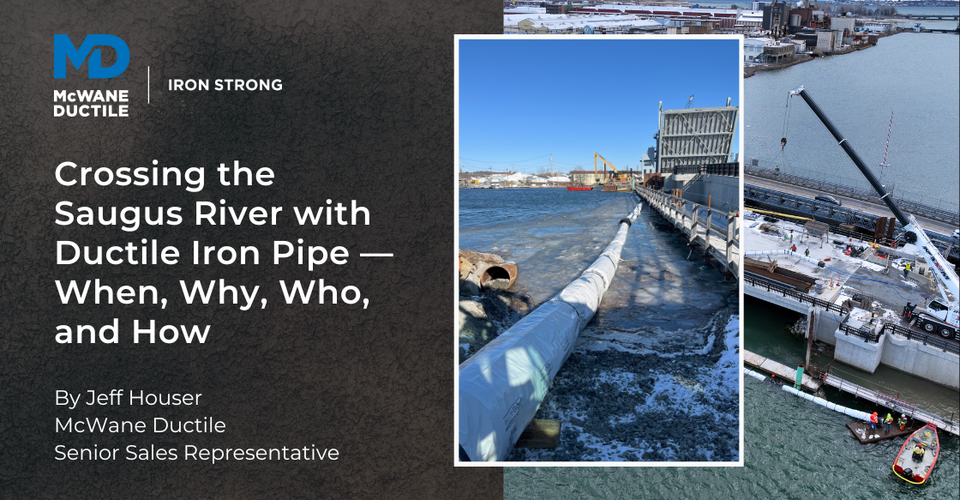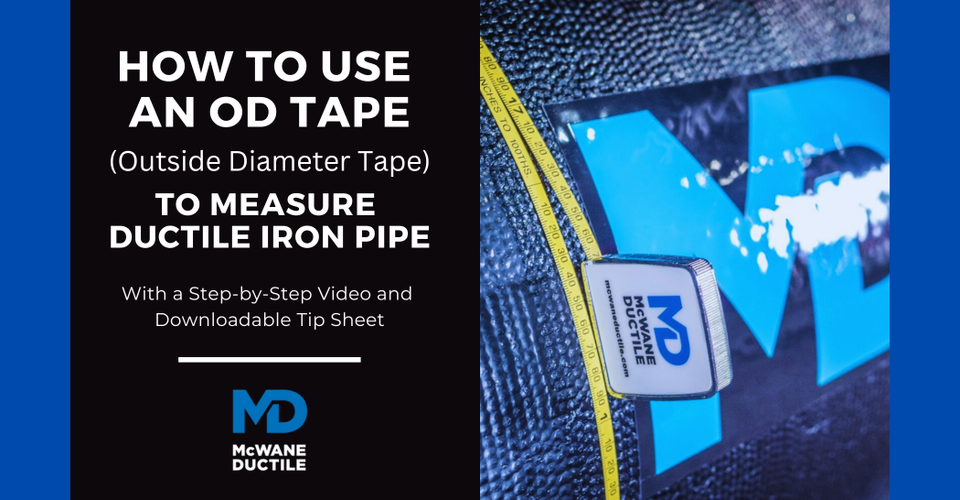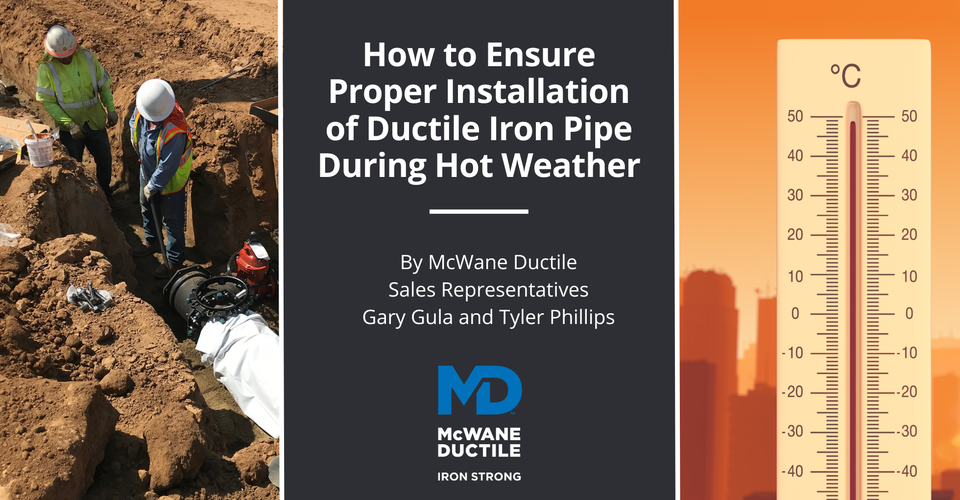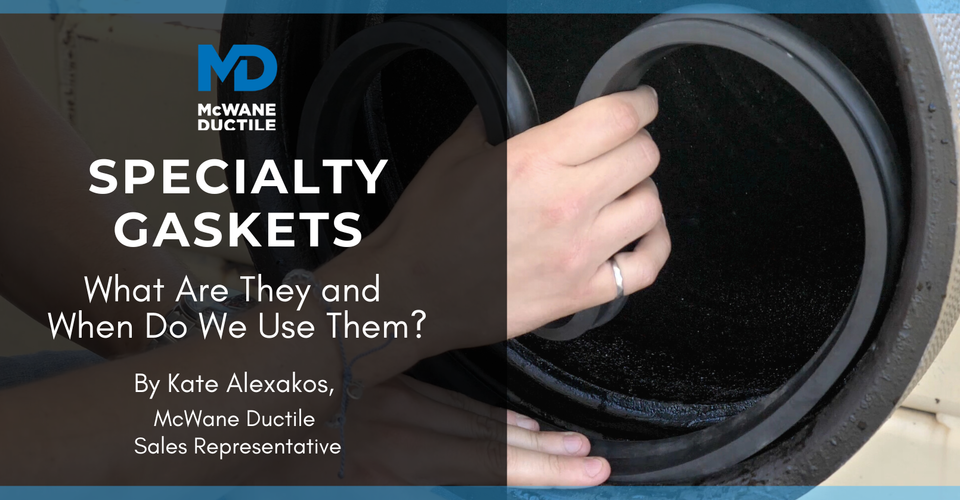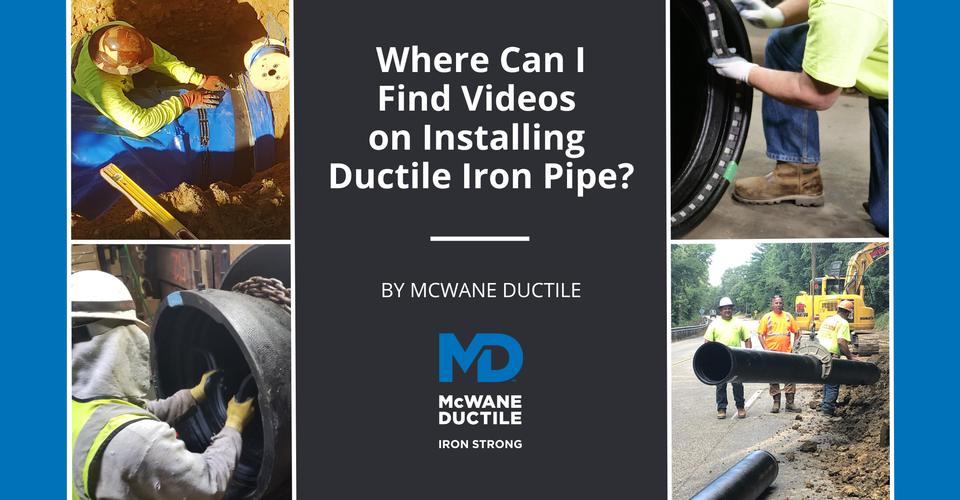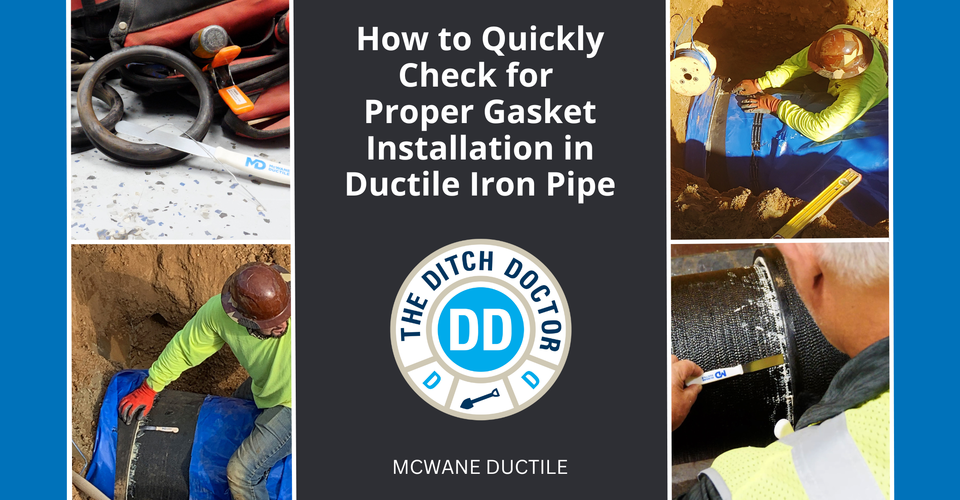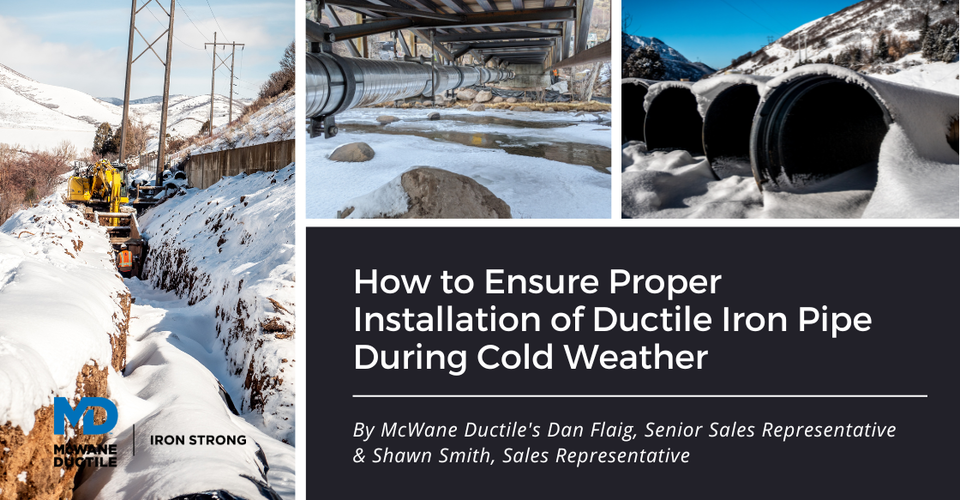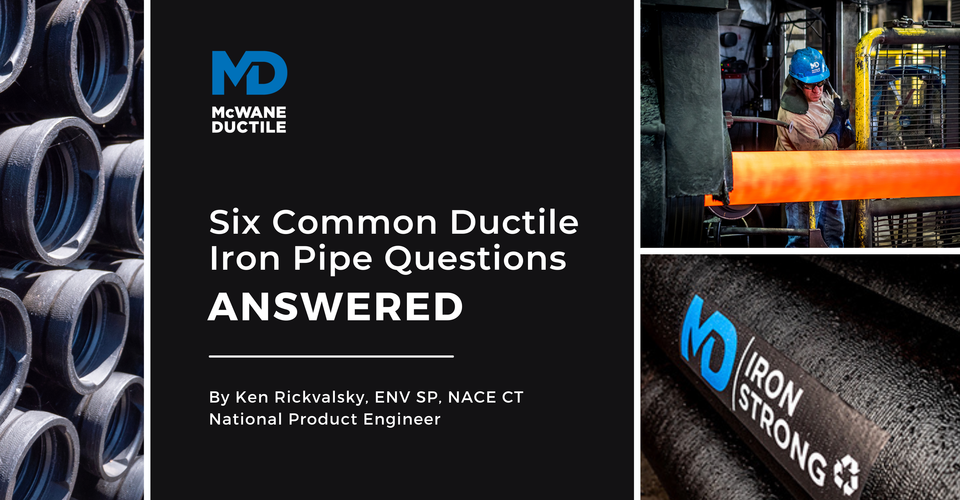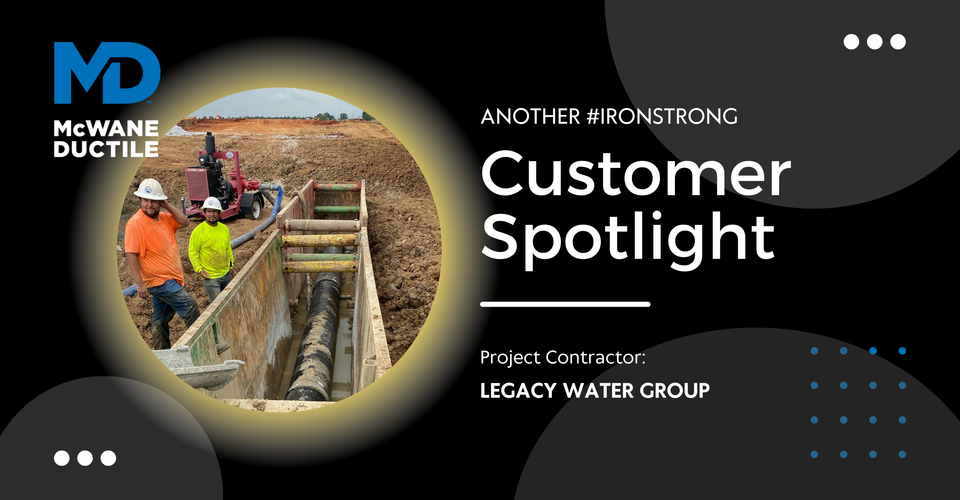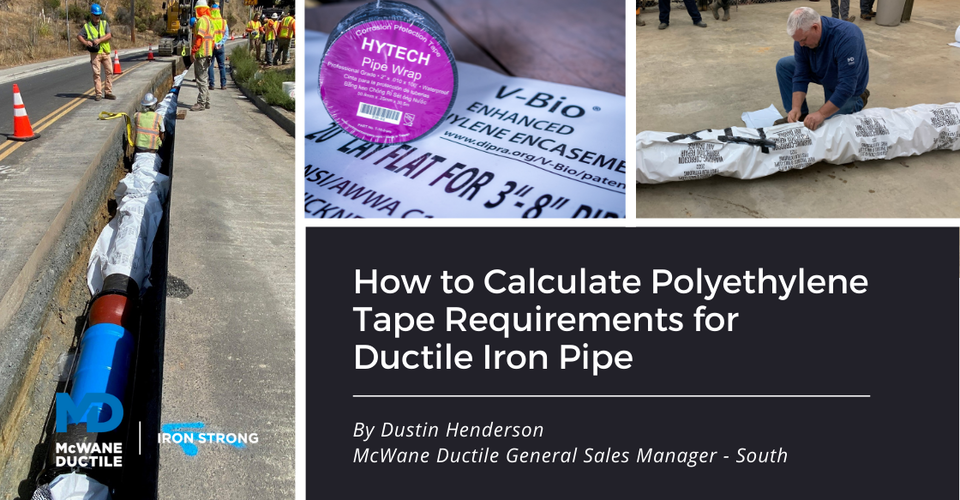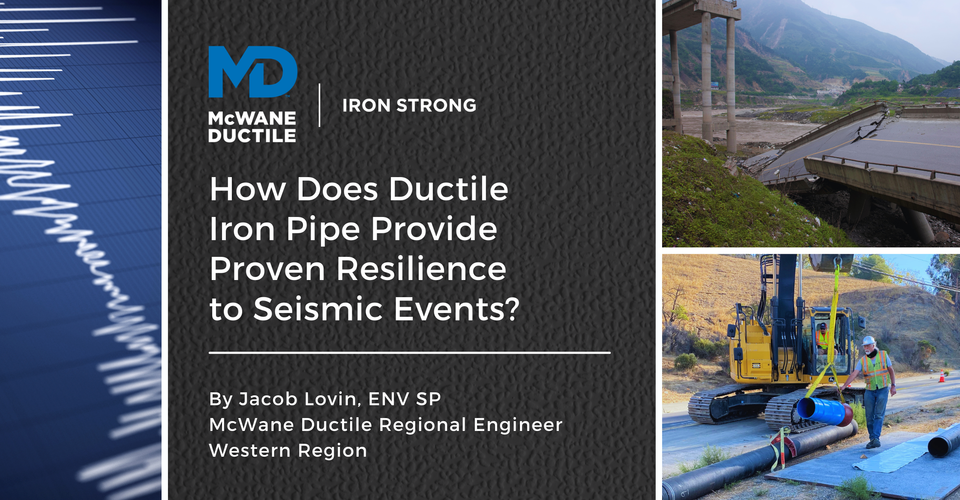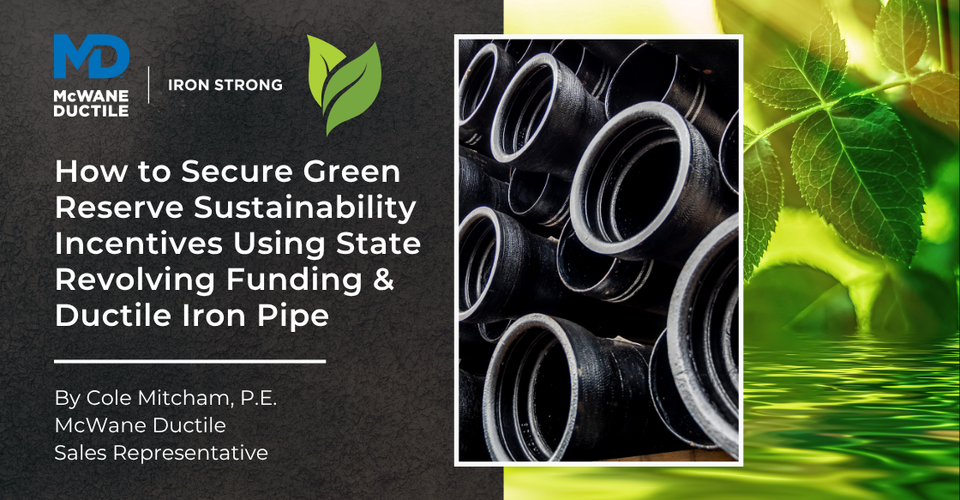-
Crossing the Saugus River with Ductile Iron Pipe - When, Why, Who, and How
04/15/2025 In Installation Products TechnicalOver the course of my 30+ year career with McWane Ductile, I’ve had the opportunity to be a part of some remarkably interesting and detailed water pipeline projects. Several of these projects have required a partnership between the community, awarding authority, contractor, water works distributor, and material manufacturer to ensure the projects were installed efficiently and correctly. However, few have matched the scale, complexity, and collaborative effort of the Saugus River crossing—part of the massive Belden Bly Bridge Replacement Project in Massachusetts. This project stands out not only for its technical challenges but also for the preparation, planning, and collaboration of key partners that brought it to a successful conclusion. In this #IronStrong Blog, you’ll hear the when, why, who, and how of this complex and intricate Ductile iron pipe (DI pipe) waterway crossing.
-
How To Use an OD Tape (Outside Diameter Tape) to Measure Ductile Iron Pipe
07/12/2024 In Installation TechnicalJimmy texts Bill, "I can't get into the virtual meeting." Bill replies, "You need to click on the link I sent you." Jimmy responds, "Where is the link?" A frustrated Bill answers, "In the email about the meeting." A confused Jimmy asks, "On my computer? Bill answers again, "Yes! Is your computer on?" Jimmy fumbles to turn on his computer and texts Bill again, "OK, it is now. How do I get to the meeting?" Does this situation sound familiar to you? Have you ever explained something to someone only to realize that they knew less about the subject than you had previously assumed? In this episode of Iron Strong, we'll cover how to use an OD (Outside Diameter) Tape when measuring Ductile iron pipe.
-
How to Ensure Proper Installation of Ductile Iron Pipe During Hot Weather
04/18/2024 In Installation ProductsAs we welcome the longer days and nights associated with spring and summer, the outside temperatures across the country will no doubt rise as well. At some point throughout the spring, summer, and even fall months, nearly every town across the U.S. will likely experience unusually warmer and sometimes dangerous conditions. This #IronStrong Blog will cover some key points to remember when working in extreme heat and humidity on a Ductile iron pipe (DI pipe) installation project. These tips can apply regardless of whether you are in a traditionally cooler climate, rural town, or "asphalt jungle."
-
Specialty Gaskets: What Are They and When Do We Use Them?
12/07/2023 In Installation Products TechnicalIn the realm of Ductile iron pipe (DI pipe) joints, standard SBR (Styrene Butadiene) gaskets are the traditional watertight sealing solution. However, did you know these gaskets are not intended for all applications? When dealing with unique jobs, selecting the proper gasket material catering to specific operational demands is essential. There are specialized gaskets, distinct in composition and functionality, that transcend the conventional capabilities of SBR gaskets. Each gasket described below is made for specific purposes based on factors like soil conditions, fluid temperature, or powerful industrial forces. These gaskets utilize modern elastomers to withstand the demands of any given project. In this #IronStrong Blog, we will closely examine each gasket available for your pipeline project.
Today’s modern push-on gaskets are comprised of different types of rubber compounds, and the development of the push-on gasket has proven to be instrumental to the success of the leak-free water and sewer joint. Let's take a closer look at each specialty gasket available on the market today.
-
Where Can I Find Videos on Installing Ductile Iron Pipe?
08/11/2023 In Installation ProductsAny Ductile iron pipe installation project aims to build a safe, long-lasting, and leak-free pipeline. Occasionally, you may seek resources to ensure you are installing pipe correctly. That’s where McWane Ductile comes into play. Along with our Learning Center, chock full of informative blogs, installation guides, and tip sheets, we have recently created some new videos detailing some best practices. Check out these detailed step-by-step installation videos below to help boost the productivity of your entire crew!
-
How to Quickly Check for Proper Gasket Installation in Ductile Iron Pipe
07/28/2023 In Installation Products TechnicalAre you the owner, supervisor, or crew member responsible for installing Ductile iron pipe? Have you ever become nervous before a hydrostatic pressure test or experienced increased anxiety during a test? Were you relieved when the waterline passed the test? What about if it failed? Did you feel defeated?
-
How to Ensure Proper Installation of Ductile Iron Pipe During Cold Weather
12/15/2022 In Installation Products TechnicalFor many people, including us, Fall and Winter are favorite times of the year. There are several things to look forward to, from football tailgates and holidays with family to sled riding with the kids. However, along with the fun can come treacherous weather conditions such as freezing temperatures, freezing rain, snow, sleet, and ice. In this Iron Strong Blog, we will discuss several topics related to cold-weather Ductile iron pipeline (DI pipe) installations and how to ensure your utility isn’t stranded out in the cold.
-
Six Common Ductile Iron Pipe Questions Answered
07/15/2022 In Installation ProductsThrough the years, across the country, contractors, engineers, authorities, and customers routinely ask questions that seem basic yet truly speak to the fundamental versatility of Ductile iron pipe (DI pipe). Among the most popular questions are:
-
Customer Spotlight: Legacy Water Group
07/08/2022 In Installation Project ProfileEven at the height of summer construction, casting pipe, and filling orders for more pipe, there's always time to take a moment to spotlight some of the great partnerships McWane Ductile has developed over the years. Once such partnership is that with Legacy Water Group who recently completed a water pipeline project in Athens, Alabama. This #IronStrong Blog quickly describes some of the highlights from the project.
-
How to Calculate Polyethylene Tape Requirements for Ductile Iron Pipe
04/29/2022 In Installation Products TechnicalIn my career with McWane Ductile, I've sold my fair share of polywrap, but the one thing that I haven't really thought about when selling polywrap is the tape needed to complete the installation. I'm not sure why this is. Maybe the biggest reason is I wasn't sure how much tape was required for each roll of polywrap I sold. Therefore, I wanted to take a deep dive into this subject to make it easier for people to know when ordering polywrap how much tape they need to purchase as well.
Latest Posts
- Developing an Asset Management Plan for Your Future Utility or Engineering Organization 12/04/2025 In Comparisons Industry
- Can Joining Water Works Industry Organizations Help You Grow Professionally? 10/21/2025 In Careers WaterWorks
- How Does Ductile Iron Pipe Provide Proven Resilience to Seismic Events? 09/04/2025 In Products Resiliency Technical
- How to Secure Green Reserve Sustainability Incentives Using State Revolving Funding & Ductile Iron Pipe 07/29/2025 In Energy Products Technical

